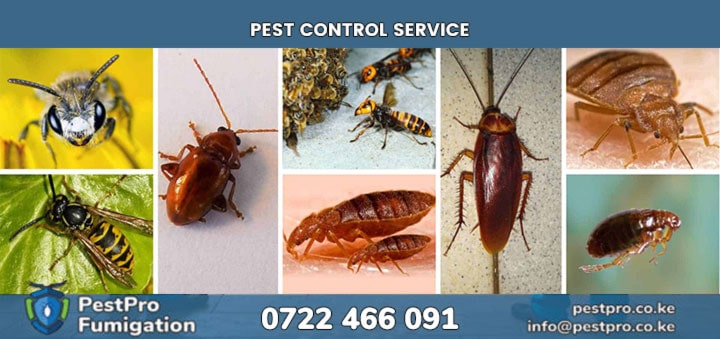Pest infestations can turn a dream home into a nightmare, causing structural damage, health risks, and costly repairs. A thorough home inspection focused on pest prevention can save homeowners from these issues before they escalate. This article provides a detailed checklist to identify and address potential pest problems during a home inspection, ensuring your property remains a safe and comfortable sanctuary.
Why Pest Prevention Matters in Home Inspections
Pests like termites, rodents, ants, and cockroaches thrive in environments where small vulnerabilities go unnoticed. A proactive inspection identifies these risks early, preventing infestations that could compromise your home’s integrity or your family’s health. According to the National Pest Management Association, termites alone cause over $5 billion in property damage annually in the U.S. By focusing on pest prevention during a home inspection, you can address vulnerabilities before they become costly problems.
"Termites can silently destroy a home’s foundation, often going unnoticed until significant damage occurs. Regular inspections are critical to catching them early."
— National Pest Management Association
Exterior Inspection: Fortifying the First Line of Defense
The exterior of a home is the first barrier against pests. Inspecting it thoroughly can reveal entry points and conditions that attract unwanted critters.
- Check Foundation and Walls: Look for cracks, gaps, or holes in the foundation, siding, or brickwork. Even small openings can allow pests like ants or mice to enter. Seal cracks with caulk or mortar to eliminate entry points.
- Examine Windows and Doors: Ensure weatherstripping is intact and screens are free of tears. Gaps around window frames or door thresholds are common entry points for insects and rodents.
- Inspect Roof and Chimney: Check for damaged shingles, loose flashing, or uncapped chimneys. Rodents and birds can enter through these areas, so install chimney caps and repair roofing materials.
- Clear Vegetation and Debris: Trim bushes, trees, and vines away from the home’s exterior. Overgrown vegetation provides shelter for pests and creates pathways to your home. Remove piles of leaves or wood near the foundation, as they attract termites and ants.
"Mice can squeeze through openings as small as a dime, making it essential to seal even the tiniest gaps around your home."
— Centers for Disease Control and Prevention
Interior Inspection: Identifying Hidden Risks
Inside the home, subtle signs of pest activity or conducive conditions can go unnoticed without a careful inspection. Focus on high-risk areas where pests are likely to hide or thrive.
- Inspect Attics and Basements: Look for droppings, chew marks, or nesting materials, which indicate rodent activity. Check for water stains or dampness, as moisture attracts pests like silverfish and cockroaches.
- Examine Plumbing Areas: Leaky pipes or poor drainage create damp environments that pests love. Ensure pipes are sealed and fix any leaks promptly.
- Check Kitchen and Pantry: Look for crumbs, unsealed food containers, or grease buildup, which attract ants and pantry pests. Store food in airtight containers and clean spills immediately.
- Inspect Walls and Floors: Look for tiny holes, sawdust-like material (termite frass), or hollow-sounding wood, which could signal termite activity. Tap wooden beams to check for weak spots.
"Cockroaches can trigger asthma and allergies, especially in children, making it vital to eliminate their hiding spots in the home."
— Environmental Protection Agency
Landscaping and Drainage: Controlling the Environment
The area surrounding your home plays a significant role in pest prevention. Poor landscaping or drainage can create ideal conditions for pests to thrive.
- Ensure Proper Drainage: Check that gutters and downspouts direct water away from the foundation. Standing water attracts mosquitoes and other moisture-loving pests.
- Maintain Lawns and Gardens: Keep grass trimmed and avoid overwatering, as damp soil can harbor pests like slugs or termites. Use mulch sparingly, as it can attract insects if piled too close to the home.
- Remove Standing Water: Eliminate sources of standing water, such as clogged drains or birdbaths, to reduce mosquito breeding grounds.
"A single mosquito can lay up to 300 eggs in just a teaspoon of standing water, making drainage maintenance a key pest prevention strategy."
— World Health Organization
Ongoing Maintenance: Sustaining a Pest-Free Home
A one-time inspection isn’t enough; regular maintenance is crucial to keep pests at bay. Incorporate these habits into your routine to maintain a pest-resistant home.
- Schedule Regular Inspections: Conduct seasonal inspections to catch new vulnerabilities, especially before spring and fall when pest activity peaks.
- Seal Entry Points: Routinely check and reseal gaps around pipes, vents, and utility lines. Use steel wool for rodent-prone areas, as they can’t chew through it.
- Monitor for Signs of Pests: Keep an eye out for droppings, gnaw marks, or unusual odors, which could indicate an infestation. Early detection prevents larger issues.
- Work with Professionals: For high-risk areas or suspected infestations, hire a licensed pest control expert to conduct a thorough assessment and recommend treatments.
"Regular maintenance and vigilance can reduce the likelihood of pest infestations by up to 80%."
— Pest Control Technology Magazine
By following this comprehensive home inspection checklist, you can identify and address potential pest problems before they start. From sealing cracks to maintaining proper drainage, each step strengthens your home’s defenses against pests. Regular inspections and proactive maintenance not only protect your property but also ensure a healthier, safer living environment for you and your family. Stay vigilant, and your home can remain a pest-free haven for years to come.
More pest Control Services
PestPro Facebook Page
Medium
